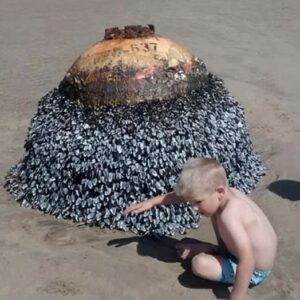There’s much to be said about the mental tranquility that comes from being in nature.
You get the idea: leisurely strolls down bucolic roads, Sunday strolls over lush, green fields, long treks through dense forests.
For the majority of individuals, leaving the city and taking advantage of everything Mother Nature has to offer is a very beneficial procedure. That’s why some people include it into their weekly routine as a habit in order to maintain their composure and sense of reality.
An extra benefit is that when you choose to lose yourself outside, you never really know what you’ll come across.

According to reports, Australian woman Kym Beechey enjoys going for walks and admiring the beauty of the natural world. She is an enthusiastic amateur photographer who tries to capture some of the most remarkable objects she encounters, however it may be challenging because most animals, birds, and insects are shy.
Anyway, Kym went out one day and believed she had spotted a newborn tawny frogmouth, which is an owl-like bird.
Kym pulled out her phone and was ready to take a discreet picture. She thought the bird had a smile on its face, so she focused in to try to capture the ideal shot.
However, as soon as she completed the task, she realized her error.
The bird was actually a banksia pod rather than a bird at all. These frequently amusing-looking pods emerge from banksia trees and can have a very distinctive appearance.
View Kym’s picture below:

Banksia trees are said to grow mostly in south-western Australia, but they are also found in Papua New Guinea and New Zealand.
Despite the fact that banksia trees’ pods are sometimes likened to pine cones, they are not considered conifers.
It is believed that the distinctive look of banksia pods originates from the process of their pods bursting open, which frequently occurs during the heat of forest fires, releasing their seeds.
After laughing heartily at what she first believed to be a “baby bird,” Kym said she now had a somewhat unusual shot to add to her collection.
For my part, I had no idea these trees even existed. Have you?


